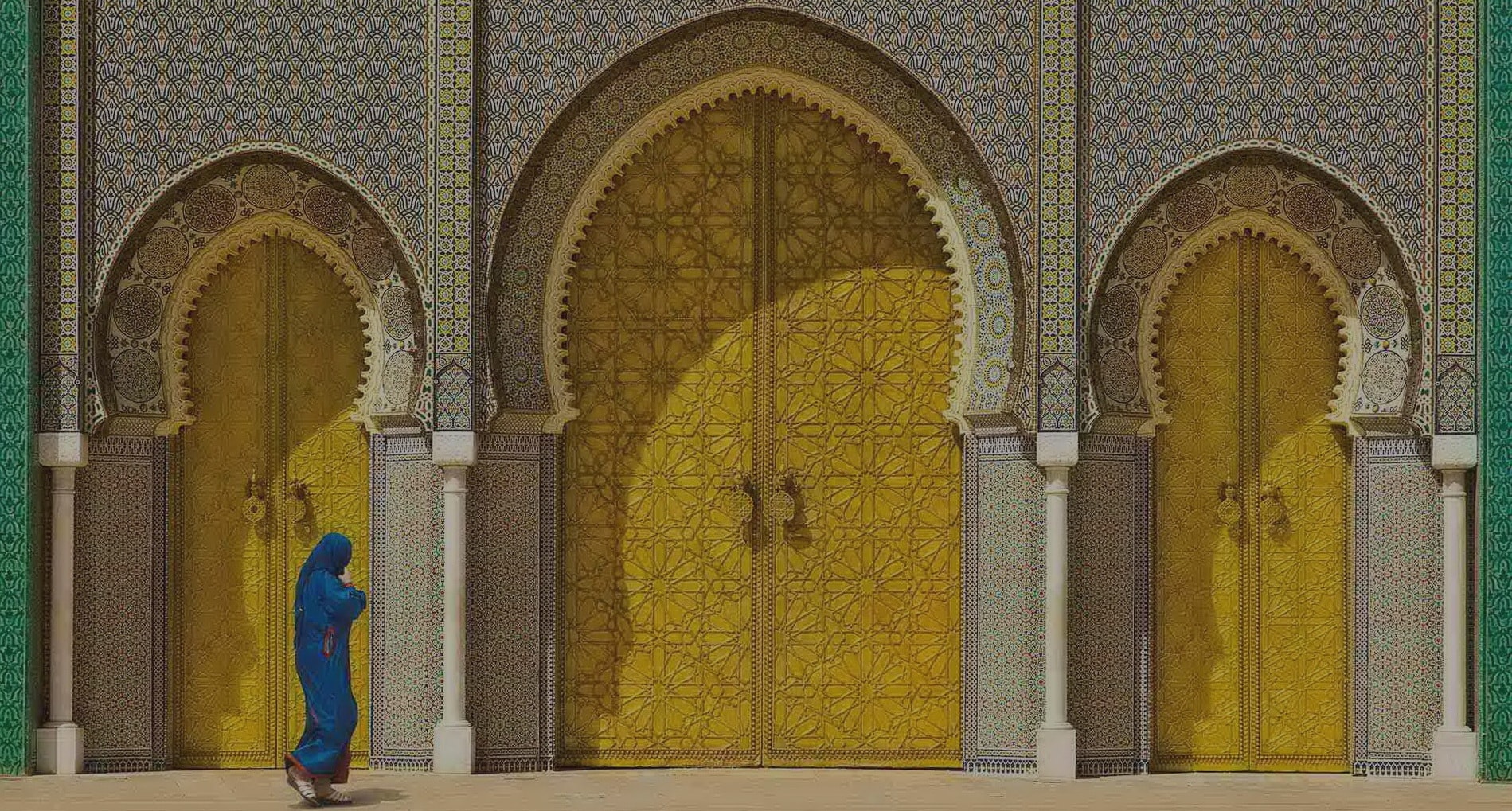1
of 10
Marrakesh

Situated at the foot of the Atlas Mountains, the imperial city of Marrakesh is noisy, atmospheric and full of history. There’s a lot to see and do in Marrakesh. Highlights include the central square of Djemma El-Fna, the Saadian Tombs, El Badi Palace, and the bustling souks or bazaars. For the most authentic Marrakesh experience, consider staying within the medina walls in one of the city’s traditional Riads.?
2
of 10
Fes

Medieval Fes was Morocco’s capital for more than 400 years and is still an important religious and cultural center today. The old walled part of the city, known as Fes El Bali, was founded in the 9th century. It is filled with elaborate architecture and best explored on foot. Other highlights include the Chaouwara Tanneries, the Merenid Tombs, the Sultanate palace of Dar el-Makhzen and the Mellah or Jewish Quarter.
3
of 10
Essaouira

Essaouira is a great place to get away from the heat and bustle of the bigger cities. In the 1960s, the seaside town was a popular beach hangout for icons like Jimi Hendrix and Bob Marley. Other than the beach, highlights include strolling through the town’s narrow streets filled with red and blue painted houses, exploring the ramparts, and listening to traditional Gnawa music.
4
of 10
Chefchaouen

Situated in the Rif Mountains, Chefchaouen is a small town in a big landscape. It’s popular with independent travelers and with those wanting to see the town’s famous blue and white painted houses. Highlights include hiking and wild swimming in the surrounding countryside and enjoying a drink amidst the architecture of Outa el Hammam square.
5
of 10
Merzouga

Merzouga is a small desert town on the edge of Erg Chebbi, a mesmerising sea of wind-blown Saharan sand dunes. It is the gateway to the wilderness of the desert interior, and the perfect place to get a taste of Bedouin life. Camel treks are the easiest and most authentic way to explore the surrounding landscape, where knife-edged dunes and blazing blue skies create the classic Saharan backdrop.
6
of 10
Jebel Toubkal

Jebel Toubkal, situated in the High Atlas Mountains, is the highest peak in North Africa. At 13,667 feet/ 4,167 meters, the trek to the snow-dusted summit is no easy feat but the breathtaking scenery makes the effort well worthwhile. While you can make it to the summit and back to the town of Imlil in a day, it’s a good idea to extend your trip to at least three days. This way, you have enough time to acclimatize to the effects of high altitude. ?
7
of 10
Meknes

Meknes is smaller and more laid-back than Marrakesh and Fes yet it has all the charms you’d expect of an imperial city including a well-preserved medina filled with easily navigable souks. Meknes was the capital during the rule of 17th-century Sultan Moulay Ismaïl and is a showcase of Moroccan architecture complete with huge gates and impressive carvings. The nearby Roman ruins of ?Volubilis are also well worth a trip.?
8
of 10
Dades Valley

The Dades Valley runs between the Jebel Sarhro and High Atlas mountain ranges and offers some of Morocco’s most spectacular scenery. The deep red cliffs on each side are lined with traditional forts known as kasbahs, many of which have been turned into luxury hotels. The best way to appreciate the valley and its Berber villages is on foot, especially when you reach the Todra and Dades Gorges.
9
of 10
Tangier

Tangier is the gateway to Africa for many travelers. While the city doesn’t have quite the charm it did in the 1940s and 1950s when you could rub shoulders with the likes of Truman Capote, Paul Bowles, and Tennessee Williams, there’s still a lot to see. Highlights include the medina, the Kasbah Museum, and the Ville Nouvelle. The harbor also offers interesting views of the Strait of Gibraltar and distant Spain.?
10
of 10
Asilah

Situated on Morocco’s North Atlantic coast, seaside Asilah is very popular with Moroccan vacationers who flock to its sandy beaches during the hot summer months. The city walls are covered in colorful murals and the houses are painted white, evoking the white-washed towns of the Greek Islands. Every August, artists, musicians and street performers flock to Asilah for the town’s vibrant annual Arts Festival.





0 Comments